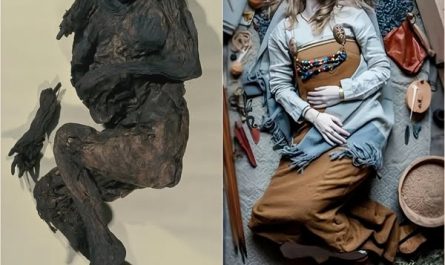Shanghai, circa 1870. A lone man stands in the dusty street of the foreign concession, his head and hands locked inside a massive square wooden board. He cannot lower his arms, cannot feed himself, cannot even swat away the flies that settle on his face. Passers-by glance, some with pity, others with scorn, but no one is surprised. This is the cangue—one of the most visually striking and psychologically devastating punishments in late imperial China.

What Exactly Was the Cangue?
Known in Chinese as jia (枷) or jiazi (枷子), the cangue was a portable pillory: a heavy wooden collar, usually made of thick planks bolted or hinged together, with holes for the neck and sometimes the wrists. Sizes varied—some were “light” at around 25 kg, while the heaviest could exceed 90 kg (200 lbs)—and offenders were forced to wear them day and night for weeks or even months.
The board was deliberately large, often 1–1.5 meters (3–5 feet) on each side, making it impossible for the wearer to reach their own mouth. Eating, drinking, and basic hygiene required the help of family, friends, or charitable strangers. If no one helped, the prisoner starved or died of thirst in full public view.
In large characters painted or carved on the front was the offender’s name, crime, place of origin, and sentence—ensuring that every passer-by knew exactly why this person had lost mianzi (face).
A Punishment Designed for Shame, Not Just Pain
Confucian legal philosophy did not prioritize physical suffering the way some Western medieval punishments did. Instead, it weaponized reputation and social harmony. Crime was seen as a disruption of cosmic and social order, and the cangue restored balance by making the offender’s wrongdoing inescapably visible.
The true agony was social death: neighbors, former friends, even children mocked or ignored the wearer. Family members often had to accompany the prisoner to feed them, compounding the collective humiliation. In extreme cases, entire families could be ruined by association.
Who Ended Up in the Cangue?
The punishment was used for a wide range of offenses, from theft and gambling to tax evasion, spreading rumors, or filial impiety. Both men and women could be sentenced—there are numerous photographs of female prisoners locked together in shared cangues.
The Western Gaze and the “Exotic” Photograph
When treaty ports opened after the Opium Wars, Western photographers like John Thomson, William Saunders, and Afong Lai found the cangue irresistible subject matter. To European eyes, it represented everything mysterious and “barbaric” about Chinese justice. Dozens of albumen prints were produced and sold as souvenirs or published in illustrated travel books with captions dripping with orientalist fascination.
These images became some of the most iconic visual records of late-Qing punishment—yet many were staged in studios rather than captured spontaneously in the street.
The End of an Ancient Practice
By the final decades of the Qing dynasty, Chinese reformers and officials were acutely aware of how such punishments damaged China’s international image. Extraterritoriality meant foreigners were exempt from Chinese law, and Western powers regularly cited “uncivilized” punishments as justification for unequal treaties.
In 1905, under the sweeping legal reforms led by Shen Jiaben, the cangue was formally abolished, along with lingchi (“death by a thousand cuts”) and display of severed heads. The Great Qing New Criminal Code of 1911 completed the transition to a modern prison-and-fine system modeled on Japanese and European codes.
Legacy of the Collar
Today the cangue survives only in museums, antique photographs, and historical drama. Yet its underlying principle—punishment through public shaming—has proved remarkably resilient. From scarlet letters to modern social-media cancellations, societies still find ways to make wrongdoing visible and reputation heavier than chains.
The next time you see one of those haunting 19th-century photographs, remember: the man in the wooden collar wasn’t just physically imprisoned. He had been erased from the moral community—one public glance at a time.





